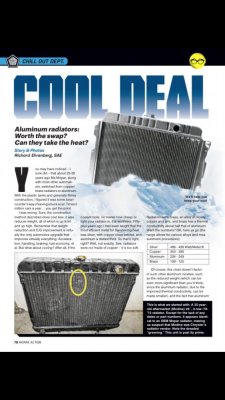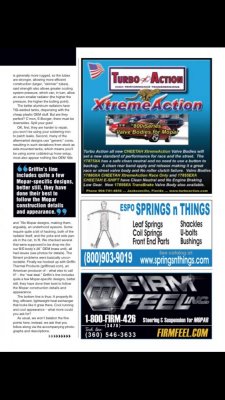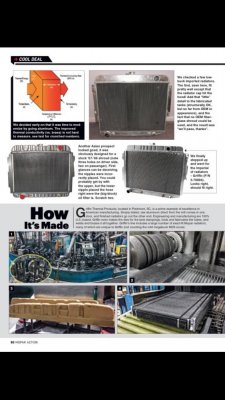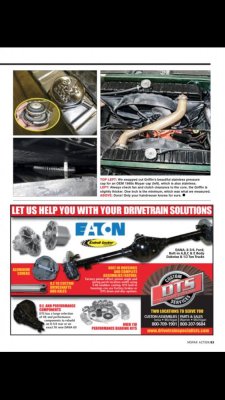Excellent info! My father in law ditched everything except the 22" radiator on his 383. Now he's running a supposed 2100 cfm electric fan, 42gpm electric water pump and an aftermarket a/c unit. Which is causing heating issues. What is the preferred online store to get the factory stuff for a decent price? His factory stuff is long gone. Thanks in advance.
First, as stated, before throwing money at it, check the simple stuff.
What exactly are his cooling issues? At idle, at speed, both? At idle = air flow issues, at speed = water flow issues. Though an over simplification, it's a starting point. Timing can affect all of the above and should be checked first.
With the 383, what level of hp are we taking about? Remember, factory stuff won't cool a 700 hp stroker either.
Check the simple stuff:
Engine:
Timing
Water jackets scaled / plugged?
Radiator
Suction hose collapsing?
Radiator fins bent/plugged/blocked?
Radiator tubes plugged?
The aftermarket AC:
is the condenser allowing proper air flow?
Is condenser positioned correctly?
Electric water pump:
What make is it?
Chinese pumps don't flow their advertised GPM.
Is this a race car? Even Meziere recommends their 300 series pump for street, which I believe is 55 GPM.
really moving at full capacity?
Ready for a rebuild?
seeing correct voltage?
Fans:
Electric fans seeing correct voltage?
on full time or on a stat?
Stat setting correct?
Shroud present / doing its job/ sealed?
Fans spinning correct direction?
Pusher fans set up to pull?
Puller fans set up to push?
Are they enough CFM for the amount of horsepower ?





















